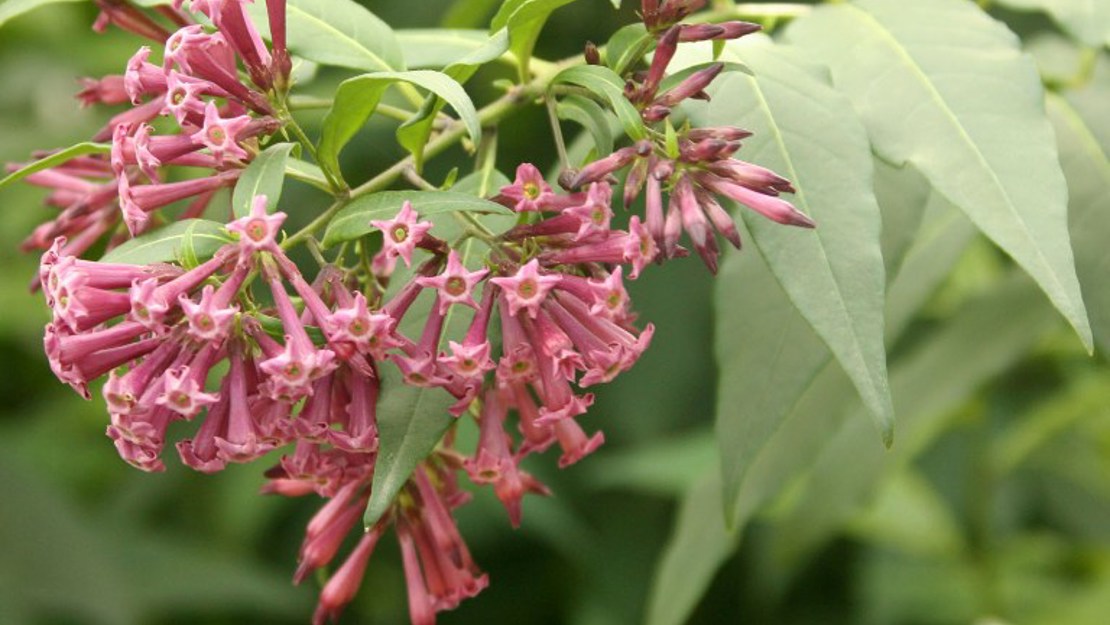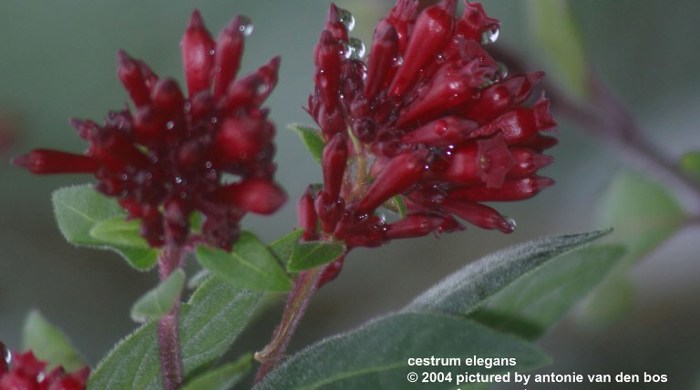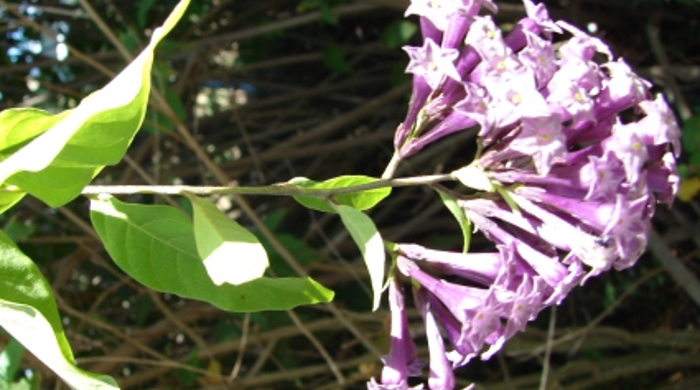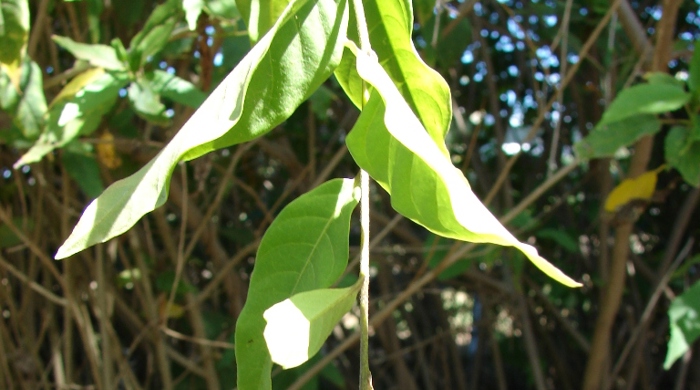Cestrum elegans and C. fasciculatum
Red cestrum
Also known as:
Purple cestrum
Family: Solanaceae
Origin: Mexico, South America

Regional Pest Management Plan (RPMP) status
- National Pest Plant Accord Species
General description
Erect perennial shrubs < 4 m tall. Stems are hairy and purple, turning smooth and woody with age. Leaves are hairy, oval, < 15 cm long and give off an unpleasant odour when damaged. C. elegans flowers are tubular, magenta/crimson and borne in clusters year-round. C. fasciculatum flowers are tubular, scarlet/purple and borne in clusters in August – March. Fruits are crimson or dark-red berries.
What you need to know
To help protect our environment:
- You must not breed, distribute, release or sell red cestrum. As red cestrum is a National Pest Plant Accord species, these restrictions apply within the Auckland region and across the whole of New Zealand.
Habitats
Forest, forest gaps, forest and riparian margins, shrubland, wasteland, urban areas, roadsides.
Dispersal
Seeds dispersed by birds, water and soil movement. Vegetative spread from roots and root fragments. Human-mediated dispersal through dumping of garden waste and movement of contaminated soil on machinery.
Impact on environment
Forms dense stands, displacing native plants and preventing native seedling recruitment. Toxic to livestock.
Control
Site management
Follow up treated areas 3 times per year. Encourage natural regeneration of native plants or replant treated areas where possible after 2-3 treatments to establish dense ground cover and minimise reinvasion.
Recommended approaches
Physical control
Method: Dig out.
Plant parts requiring disposal: All parts.
Disposal options: Remove to greenwaste or landfill if practical. Cut stems can resprout.
Biocontrol
Biocontrol is currently not available for this species.
Community agrichemical control recommendations
No qualifications: Cut stump and paste freshly cut base of stems with metsulfuron gel. Ringbark stem and paste with metsulfuron gel.
Basic Growsafe certified: Cut stump and spray freshly cut base with 5g metsulfuron-methyl per 1 L of water.
Certified Handler/Experienced agrichemical user: Foliar spray seedlings with 5g metsulfuron-methyl per 10L of water and 20ml penetrant.
Safety notes
Poisonous to animals.
Caution: When using any herbicide or pesticide please read the label thoroughly to ensure that all instructions and safety requirements are followed.






